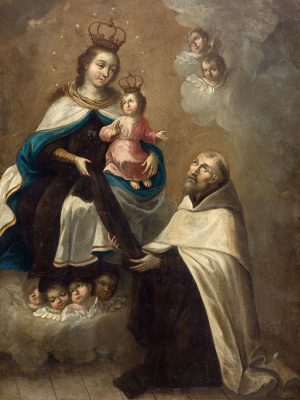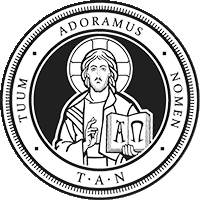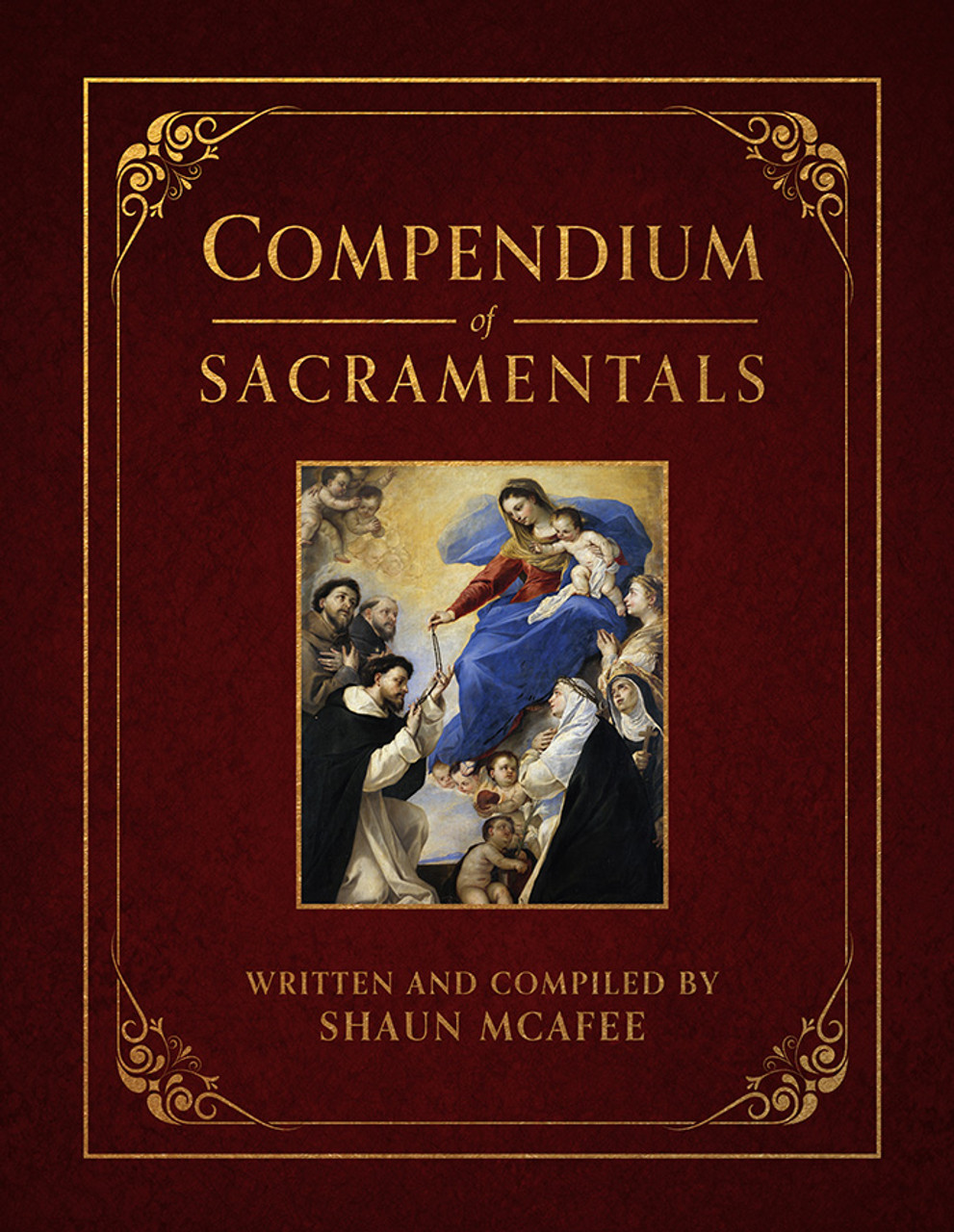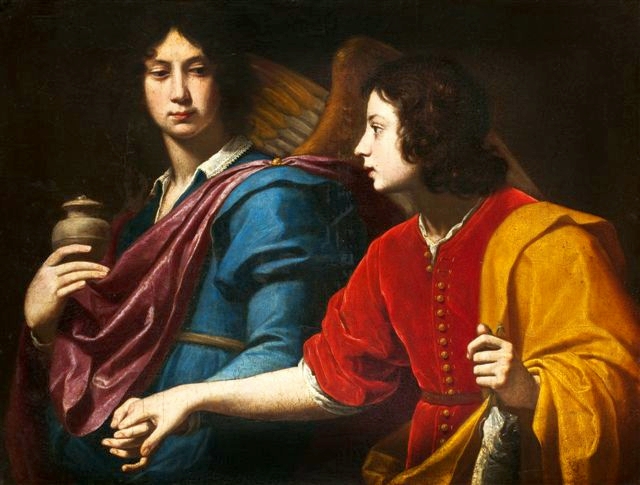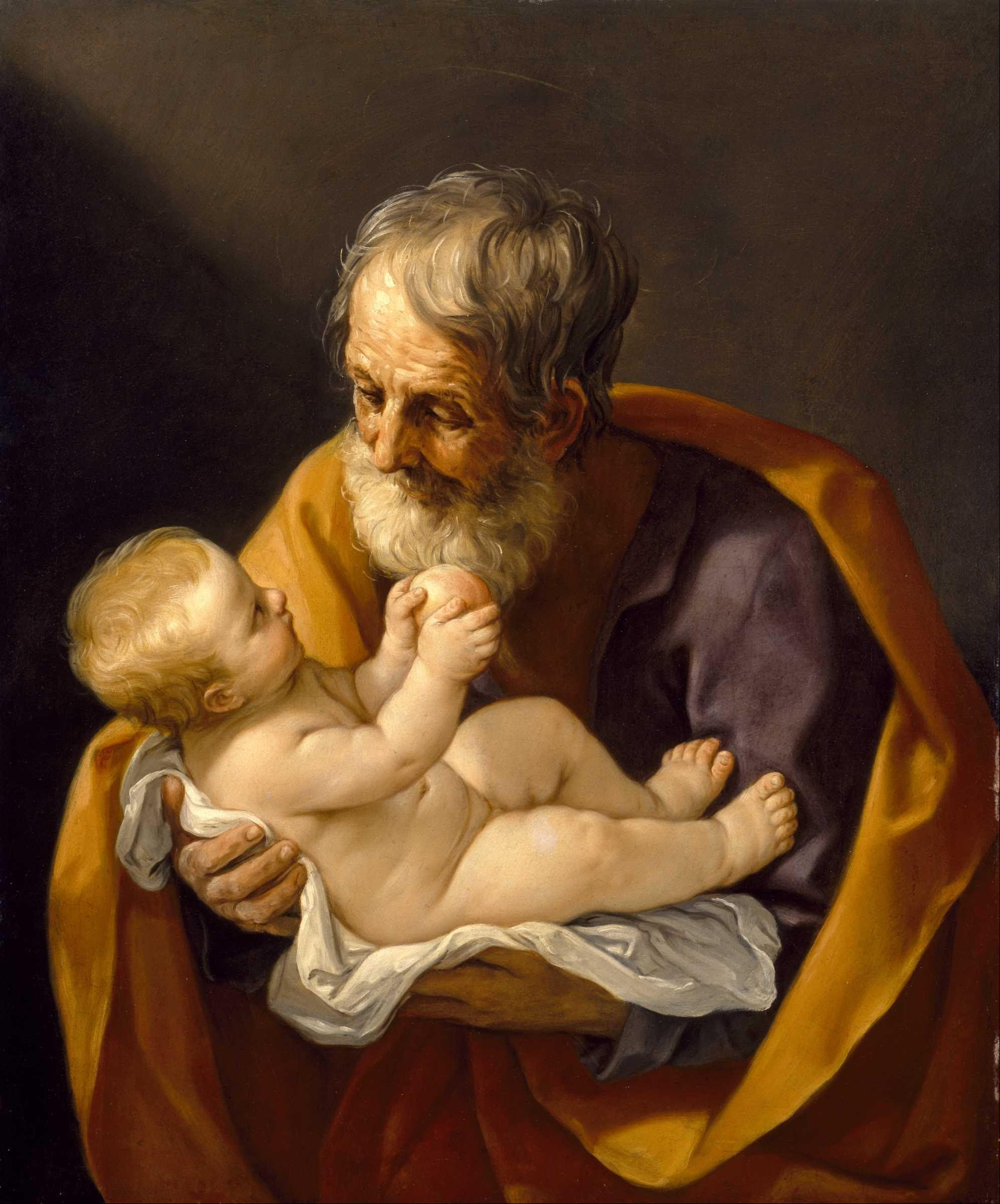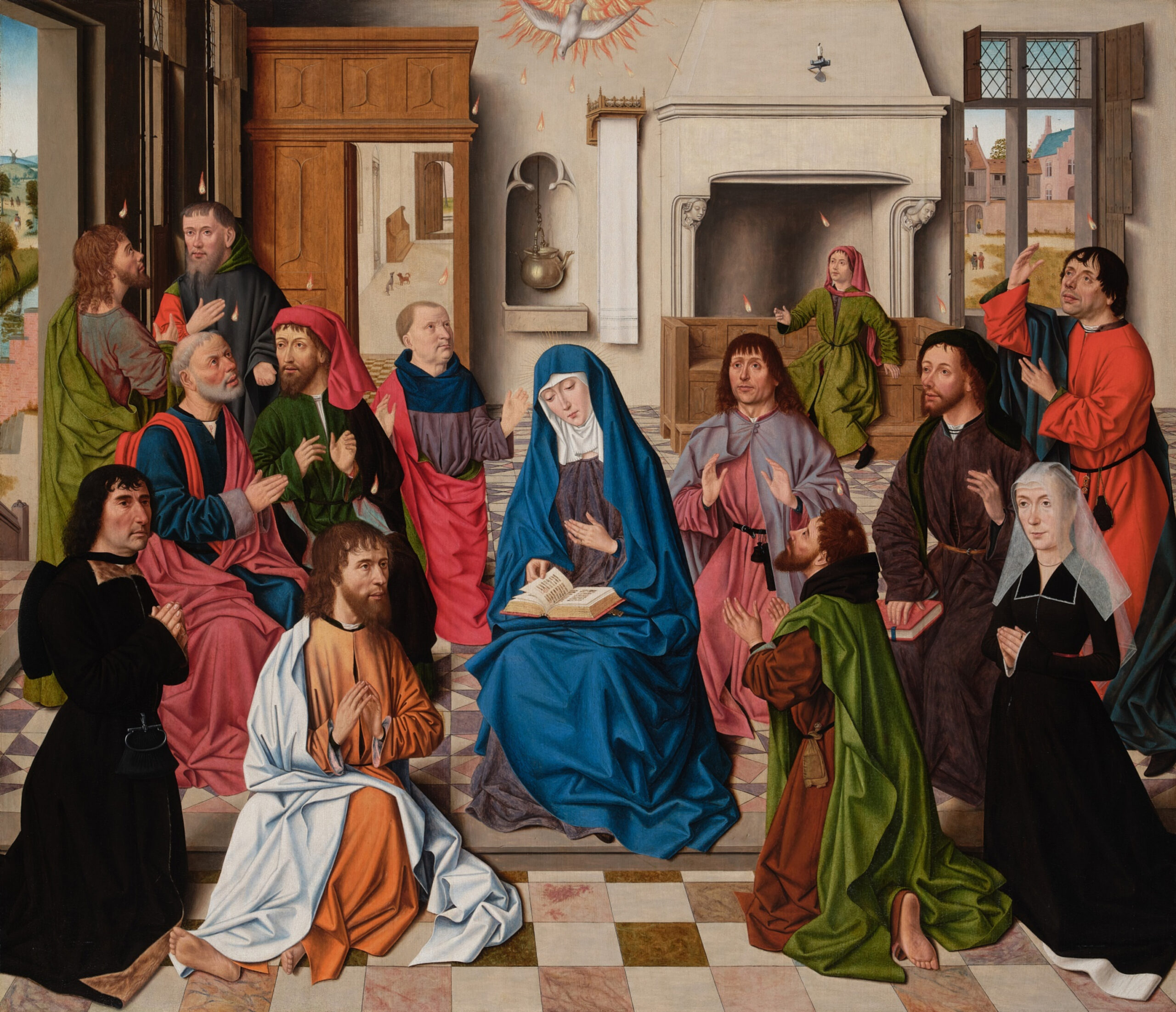Discover the original of scapulars and what different Marian devotions they correspond to. Read this excerpt from the Compendium of Sacramentals!
What Is a Scapular?
Even on earth, labor is a gift and becomes a path to human freedom. Labor sanctifies our souls, disciplines our bodies, and makes us masters over our passions, freeing us to seek God in a deeper capacity, in a more consistent routine. Pope John Paul II delivered this teaching with succinctness in Laborem Exercens, his encyclical on the dignity of work: “By enduring the toil of work in union with Christ crucified for us, man in a way collaborates with the Son of God for the redemption of humanity. He shows himself a true disciple of Christ by carrying the cross in his turn every day in the activity that he is called upon to perform.”
The sacramental scapular is an ode to this view of labor, being born from the shoulders of laborers for work in God’s vineyard on earth.
A scapular is a sacramental that is worn on the outer part of the habit of monastic religious orders. Other religious orders and religious congregations, whose way of life is not eremitical, have also adopted the scapular as a part of their habit.
The traditional scapular monks have worn consists of a rectangular piece of linen, no wider than the shoulders, that covers the front and back of its wearer. It is from this wearing on the shoulders—scapula in Latin—that the sacramental gets its name. With a small opening for the head in the middle, the traditional scapular falls almost to one’s feet, front and back.
This religious apparel started as a practical one. Hermits and those living in religious communities developed it as part of their religious habit, serving as an appropriate garment for performing manual labor. It kept the dust and dirt off their otherwise clean habit, almost akin to a bib keeping food off a young child while he eats. Popular styles changed, but, clinging to their traditions, these hermits and laboring religious became identified by this rectangular garment, and so retained it as a sign of their spiritual and corporeal labors. Around the eleventh century, the scapular became a distinctive way to identify a monk or other religious.
For this, the Rule of St. Benedict included scapulare propter opera, or “the scapular because of works.” As its use grew to permanency in the habit of orders, the symbolism moved from a suggestion of labor to the iconic clothing of a monk. For some religious orders, the sides of the scapular are tied together under the arms. Others included extended material that covered the upper biceps, forming the likeness of a cross. Still other traditional scapulars include a cowl to be worn over the head. The Church closely associates the scapular with the yoke of Christ, recalling the divine promises of labor for the kingdom and salvation of one’s soul. For this, they were raised to the dignity of a sacramental. In older rituals of blessing scapulars, they were thus referred to as the “yoke of Christ,” language still prominent in the Roman Ritual.
Lay members of these religious orders—known as tertiaries, or “third order” members— eventually began to adopt the scapular as well. Today, a Dominican tertiary, for example, is given a scapular that is approximately 3 inches by 2.5 inches. This practice began with the pious wish to be buried in the habit of the order, authorized in the earliest tertiary rules of the mendicant Franciscan and Dominican Orders, and later, oblates of the Benedictine communities as well. These statutes are still permitted today with proper permission.
Members of third orders will usually wear their scapular under their clothing and wear the habit of their order on special occasions. Laity have adopted the practice of wearing the scapular more over the centuries, although the scapular’s size became noticeably smaller. Today, the scapular most laypeople wear most is made of two cloths (of varying material)—each about two inches by two inches—which are attached by strings long enough to be easily placed around and removed from the head and neck.
There are many different kinds of scapulars in use today, each tied to a special devotion or religious order. The laity are encouraged to make use of devotional scapulars with proper investiture when required. However, religious scapulars are strictly to be worn only by those who have made the proper promises or oblation to their respective orders and religious communities.
Kinds of Scapulars
Some scapulars approved for use are not the habit of any religious order or confraternity, but rather the design revealed to a particular saint. Occasionally, these are referred to as “badges” in older texts. Regardless, they are of the design and semblance of a small scapular and thus belong to this group of sacramentals. Many of the scapulars below fit into this category.
Brown Scapular
In 1251, St. Simon Stock, master general of the Carmelite Order, was given a vision in which he saw the Blessed Virgin Mary handing him the brown scapular, saying, “This shall be a privilege for you and all Carmelites, that anyone dying in this habit shall not suffer eternal fire.” It was this promise that accounted for the popularity of the brown scapular, extending also to laypeople.
Green Scapular
Sr. Justine Bisqueyburu was a French nun and member of the Daughters of Charity of St. Vincent de Paul, the same community, in fact, as St. Catherine Laboure, who was given the instructions for the Miraculous Medal. Given her piety and holiness, Sr. Justine experienced many extraordinary graces from the onset of her life as a religious.
In 1840, she saw the Blessed Virgin Mary in a series of visions that showed the design of the green scapular, honoring her Immaculate Heart.
White Scapular
Pope Leo XIII, as a strong supporter of both the Augustinians and devotion to Our Lady of Good Counsel, approved the white scapular in 1893. The front of the scapular features the image of Our Lady of Good Counsel in Genazzano, with the inscription, Mater boni consilii ora pro nobis, which is Latin for “Mother of Good Counsel, pray for us.” The back side has the triple papal tiara with the keys of St. Peter—a popular symbol of the papacy—with the words of Leo XIII: Fili acquce consiliis ejusi, Latin for, “Child, listen to her counsels.”
Blue Scapular
Venerable Ursula Benincasa (1547–1618) was the founder of the order of Theatine nuns. In a vision, the Blessed Virgin Mary revealed that her sisters would wear a habit that included a sky-blue scapular that would honor the Immaculate Conception. Many of the faithful continue to become invested with this scapular, under the auspices of the Confraternity of the Immaculate Conception of the Blessed Virgin Mary and Mother of God. It usually contains the symbol of the Immaculate Conception on one side, and an another image of Mary on the other.
Black Scapular
In the year 1233, the Blessed Mother told a group of seven young noblemen from Florence to leave their lives behind and live entirely for God. At that time, these men belonged to a confraternity known as the Laudesi, meaning “praisers.” Together, they founded the Order of Servites, which Pope Alexander IV formally sanctioned in 1256. In 1240, the seven gathered together and once again received a vision, this time with the Mother of God clad in a black mantle and holding a black habit in her hands. This was a sure sign that their habit should be black, conforming to their life of imitating the sorrows (“dolors”) of Mary.
This black scapular is still worn in full in the habit of Servite priests and nuns, who serve in some of the world’s most revered churches. The small black scapular is made of black cloth, with an image of Our Lady of Sorrows on the front, and on the back there may also be another image of the Blessed Virgin.
ooo
This article is taken from a chapter in Compendium of Sacramentals by Shaun McAfee which is available from TAN Books.


